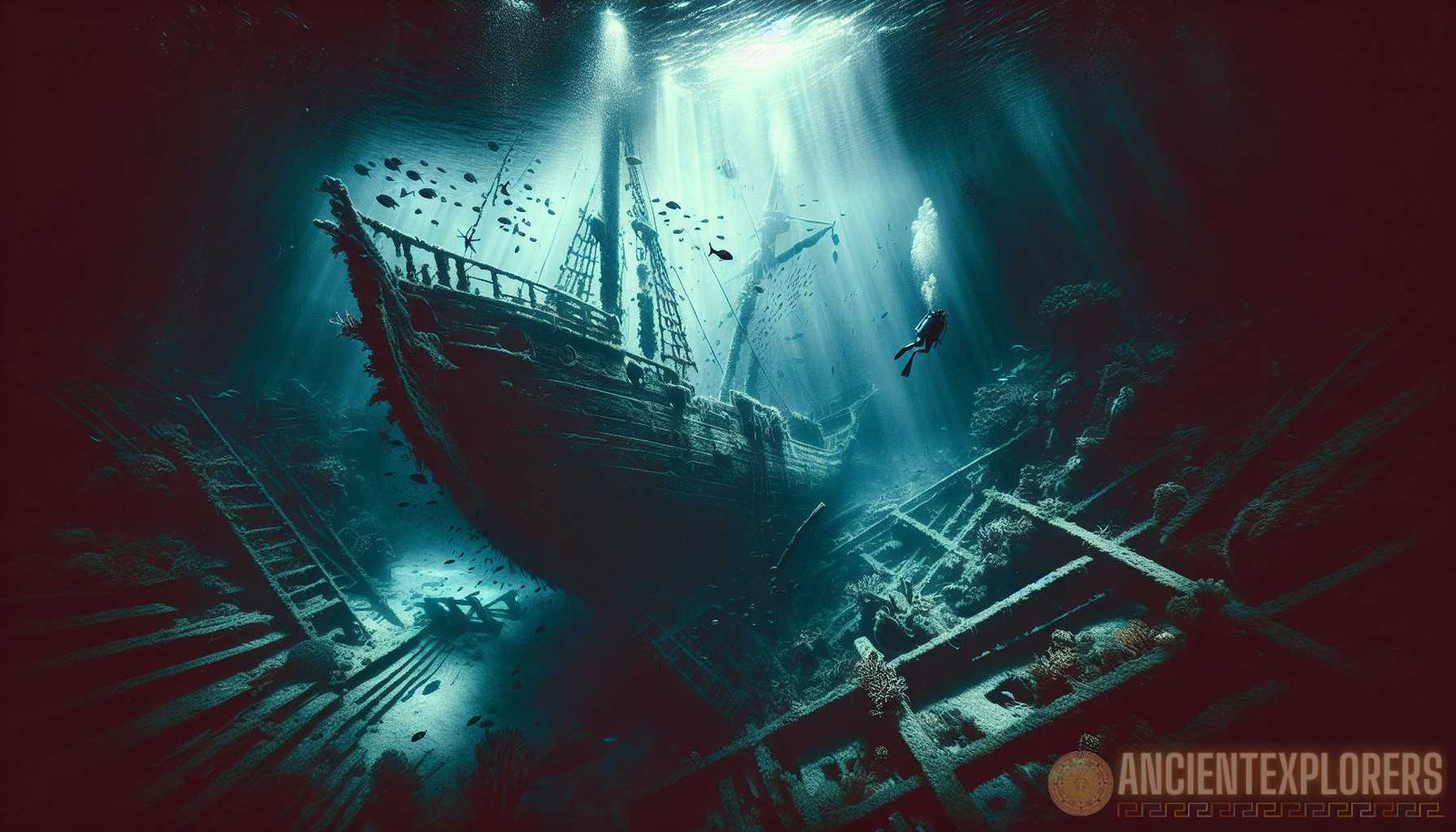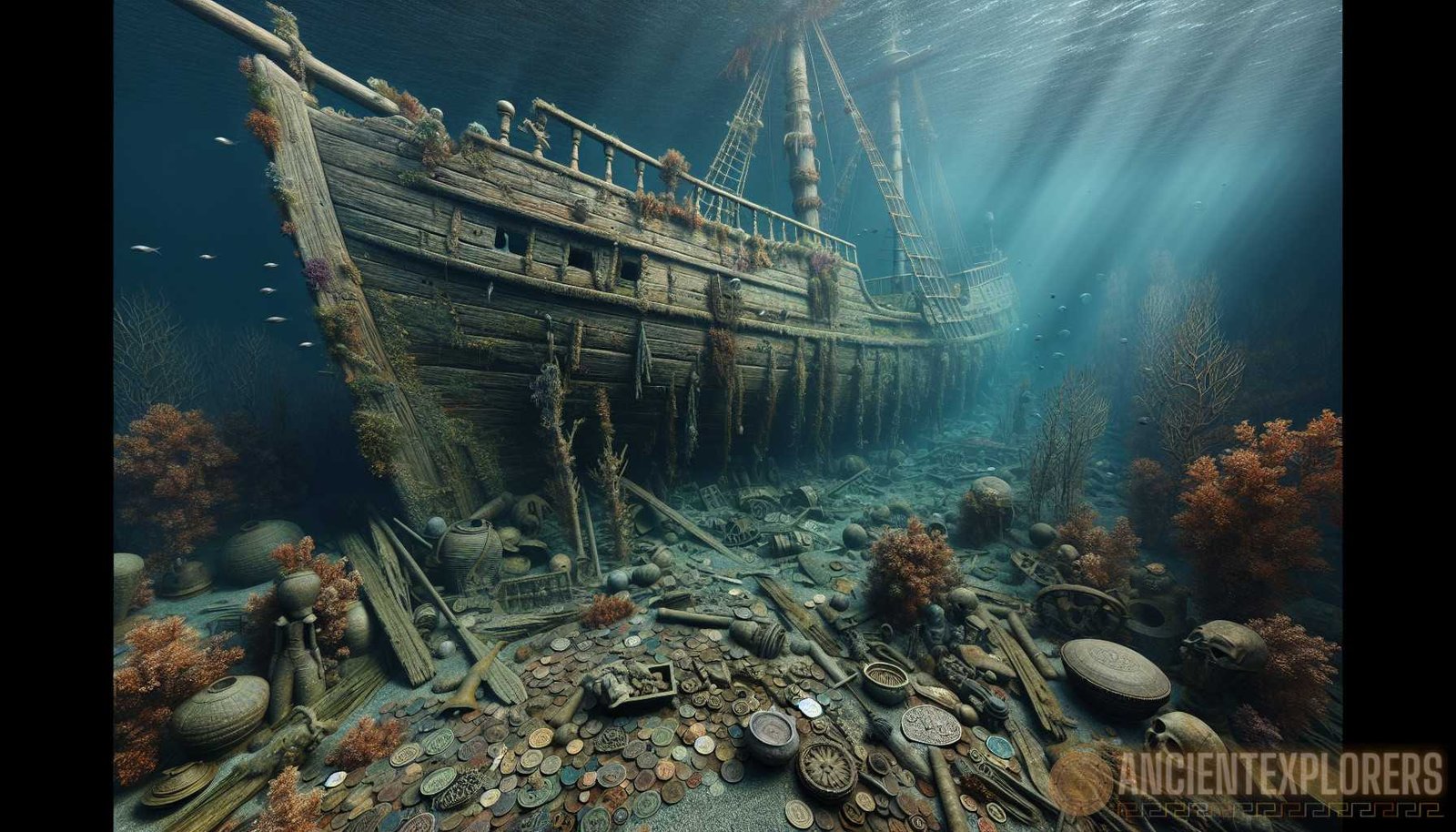Unlocking the Enigmatic Depths: Unveiling the Aquatic Treasures of Ancient Shipwrecks
Exploring ancient shipwrecks is like diving into a time capsule, revealing a fascinating glimpse into the past. These submerged vessels are not only remnants of bygone eras but also treasure troves waiting to be discovered. From coins and jewelry to ceramics and weaponry, shipwrecks hold an array of artifacts that enable archaeologists to piece together history. In this article, we delve into the world of shipwreck treasures, uncovering the mysteries of the deep and the secrets they hold.
The Significance of Shipwreck Treasures
Shipwreck treasures offer invaluable insights into the cultures and societies of the past. These artifacts help researchers reconstruct trade routes, ascertain maritime technologies, and understand the daily lives of ancient civilizations. By examining the materials, styles, and craftsmanship of the items recovered, archaeologists can gain a deeper understanding of the economic, social, and cultural aspects of ancient societies.
Shipwreck treasures also provide evidence of historical events and help challenge or confirm existing historical narratives. The recovery of weapons, for example, can shed light on ancient warfare techniques and conflicts. Likewise, the discovery of personal items like jewelry and clothing can offer glimpses into the lives of ordinary people, adding humanizing context to our understanding of the past.
Archaeological Methods for Salvaging Shipwreck Treasures
Recovering shipwreck treasures is a delicate and challenging process. Archaeologists employ various techniques and tools to ensure the preservation and safe retrieval of these precious artifacts. Here are some commonly used methods:
- Underwater Excavation: Archaeologists dive to the shipwreck site and carefully excavate the artifacts from the seafloor. Specialized tools such as suction hoses, dredges, and low-pressure water jets are used to remove sediments layer by layer, ensuring the preservation of delicate items.
- Raise and Recovery: When shipwrecks are located in shallow waters, techniques such as cranes or flotation devices are used to lift the artifacts out of the water. This method allows for a more systematic and thorough excavation of the wreck.
- Mechanical Dredging: In cases where the shipwreck is heavily encrusted or buried in sediment, mechanical dredging is employed. This method utilizes heavy machinery to remove the surrounding sediments and expose the wreck and its treasures.
- Remote Sensing: Sonar technology and magnetometers are used to map the seafloor and locate potential shipwrecks. Remote sensing techniques enable archaeologists to identify potential sites and focus their excavation efforts efficiently.
Famous Shipwreck Treasures
Throughout history, various shipwreck treasures have captivated the world with their historical and monetary value. Let’s explore some of the most famous and significant discoveries:
1. RMS Titanic
The sinking of the RMS Titanic in 1912 is one of the most well-known maritime disasters. The wreckage was discovered in 1985, and since then, several expeditions have been conducted to salvage artifacts from the ship. Treasures recovered from the Titanic include personal items such as jewelry, clothing, and china, as well as larger pieces like the ship’s wheel and parts of the grand staircase. Exploring the wreckage of the Titanic has provided invaluable insights into early 20th-century life and the tragedy that unfolded on that fateful night.
2. Antikythera Shipwreck
Discovered by sponge divers off the coast of the Greek island of Antikythera in 1900, the Antikythera Shipwreck revealed an astounding assortment of artifacts from the 1st-century BCE. The most famous treasure recovered from the shipwreck is the Antikythera Mechanism, an ancient analog computer used for astronomical calculations. The find revolutionized our understanding of ancient Greek technology and confirmed their advanced knowledge of mechanics.

3. Nuestra Señora de Atocha
Sunk off the coast of Florida in 1622, the Nuestra Señora de Atocha was a Spanish galleon carrying a cargo of treasure from the New World. The wreck was discovered in 1985, and over the years, an incredible amount of gold, silver, emeralds, and other precious artifacts have been salvaged. The treasure recovered from the Atocha is estimated to be worth over $400 million, making it one of the most valuable shipwreck finds in history.
4. The Vasa
The Vasa was a Swedish warship built in the 17th century. It sank on its maiden voyage in 1628 and was rediscovered in the 1950s. The salvaged wreckage revealed a trove of exceptionally well-preserved artifacts, including cannons, sculptures, and over 12,000 individual objects. The Vasa Museum in Stockholm houses these treasures, providing a unique insight into 17th-century maritime warfare and Swedish naval history.
The Importance of Conservation
Preserving shipwreck treasures is of paramount importance to ensure their longevity and the continuation of our understanding of the past. Conservation efforts aim to stabilize and restore artifacts, protecting them from decay and damage.
Conservation methods vary depending on the materials involved. Organic materials like wood or cloth often require specialized chemical treatments to prevent degradation. Metals may be cleaned and treated to remove corrosion and prevent further deterioration. Ceramics, glass, and other fragile materials are handled with extreme care to avoid breakage.
Once artifacts are recovered, they are usually transported to specialized labs where conservation experts assess, document, and undertake necessary treatments. Long-term storage and display solutions are also carefully considered to ensure the artifacts are protected while remaining accessible for study and exhibition.
Conclusion
Exploring ancient shipwrecks and unlocking the treasures they hold allows us to unravel the mysteries of the past. From the opulent riches of the Titanic to the sophisticated technology of the Antikythera Mechanism, shipwreck treasures provide a unique window into bygone eras. These submerged time capsules have the power to reshape our understanding of history and reveal captivating stories.
Through meticulous archaeological methods and careful conservation, shipwreck treasures are given new life and become invaluable sources of knowledge and inspiration for future generations. By preserving these underwater archaeological sites, we ensure that the enigmatic depths continue to reveal their secrets and enrich our understanding of the past.




Pingback: ᐈ Discover the Enchanting Depths: Unearthing Sunken Cities and Reveling in Forgotten Ancient Civilizations Explored
Pingback: ᐈ Symbol Decoding: Unveiling the Mysteries of Ancient Burial Chambers for Sensory Exploration in Ancient Civilizations Explored